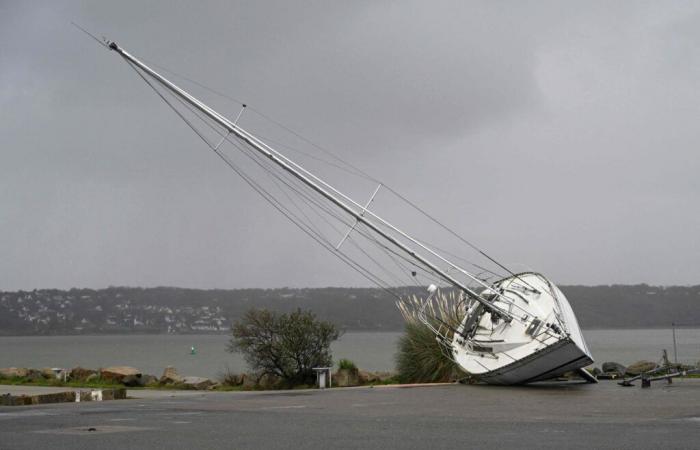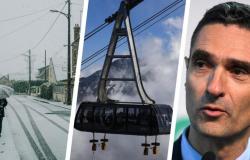Météo-France has placed 52 departments on orange alert – 33 for snowfall and ice on an axis going from North Brittany to the Grand-Est and 19 for strong winds further south – from Thursday November 21 at 6 hours, according to a bulletin published Wednesday at 11 p.m.
“On Thursday, the Caetano depression will cross France from west to east and will cause snowfall” north of its trajectory, including in the plains, which could be “significant enough to make traffic conditions difficult”specifies Météo-France. The meteorological agency is also waiting “strong winds in the south” of the passage of depression.
Snowfall is forecast “between the end of the night from Wednesday to Thursday and the evening of Thursday” and could make traffic conditions “difficult”which led several departments to take measures to limit road traffic. “In Ile-de-France, we expect 1 to 5 cm, locally 5 to 10 cm in the south of the region”warns the forecaster.
In Ile-de-France, the speed limit will be lowered by 20 km/h and trucks weighing more than 7.5 tonnes will not be able to “perform an overtaking maneuver” on certain roads from 11 a.m., the police headquarters said. The same in Loiret, the prefecture said. The ADP group, manager of Paris airports, announced on Wednesday evening that “the whole of [ses] resources are ready to be mobilized if necessary” to clear snow from the slopes.
Avalanches possible in the Alps
Snow will also affect Brittany and Normandy, Centre-Val de Loire and Burgundy-Franche-Comté. The Normandy region has “decided to suspend school and commercial transport lines” in the departments of Orne, Manche, Calvados and Eure. In Eure-et-Loir, where expected snow depths could reach up to 20 cm in the hilliest areas of Perche, school transport will also be suspended on Thursday. It will be the same in the agglomeration of Saint-Lô in La Manche.
The A84 will be prohibited for vehicles over 7.5 tonnes in Calvados, as well as between Fougères and Caen in Manche. In Loire-Atlantique, the Saint-Nazaire bridge will be closed to traffic in the event of wind gusts of more than 120 km/h.
Strong winds could also cause avalanches in the Alps. “Extreme vigilance is required when practicing all mountain activities and mainly ski or snowshoe hikes” and Haute-Savoie “The avalanche risk is 4 out of 5 on the Mont-Blanc massif”warned the prefecture.
Read the decryption: Is it hot or cold for the season? Compare today's weather with previous years
Read later
The passage of this depression occurs within the framework of a “early winter episode” with the arrival on Wednesday of a “polar air mass” causing temperatures to drop. These latter “should peak between 5°C and 10°C at the best of the day, i.e. values comparable to the January averages”according to Météo-France. The cold is expected to persist on Friday before a “powerful redoux” expected during the day on Saturday.
Newsletter
“Human warmth”
How to face the climate challenge? Every week, our best articles on the subject
Register
In the southern part of the depression, more precisely on the Atlantic coasts from Aquitaine to Pays de la Loire up to the Massif Central, strong wind gusts capable of exceeding 100 km/h are possible.






